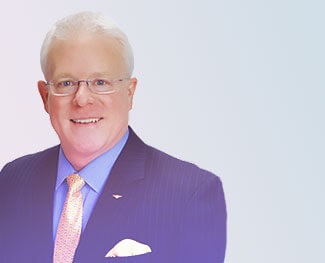Jun 26
2019
Health Technology for the Ages: Different Patient Demographics Are Embracing New Options
By Mike Braham, CEO, Trapollo.

Delivery of care options have evolved quickly over the last decade, as more patients have become comfortable with remote care and connected health services. And while it’s often assumed that younger generations are more eager to adapt to the changing healthcare landscape, services enabled by technology are being adopted by all generations – but often for different reasons.
The Greatest Generation and Baby Boomers
It’s estimated that by 2020, roughly 40 percent of the U.S. population will be over 50.
Those in the older generations are typically associated with an aversion to technology, assumed to value in-office engagements with medical providers and clinging to antiquated methods of treatment.
Although older generations grew up in a face-to-face generation where doctors regularly made house calls, that doesn’t mean they balk at connected health services. In fact, Baby Boomers and the Greatest Generation (those that grew up in the Depression era) are more digitally connected than ever and benefit from remote visits too. Many don’t realize that Boomers have been using technology since PCs were introduced in the workplace the early 1990’s, long before the launch of today’s iPhones and Androids. And while modern technology may be relatively new to the Greatest Generation, the group has shown to be the fastest-growing adopters of smart phones.
While neither group is digitally native, many welcome alternative care options such as connected health. For one, a large portion of the nation’s $2.7 trillion in annual healthcare expenditures are related to chronic disease, which afflicts older patients more than younger ones. Plus, connected health options are less expensive than in-office visits. However, cost isn’t the only factor they consider.
Most Boomers are still in the workforce and looking to balance the end of their careers with caring of aging parents. Connected health can save money and time associated with office visits. And those in the 75-85 age group – the Greatest Generation – prefer not to travel to see a doctor post-surgery if they could use two-way video or a phone call. This is coupled with the fact that transportation is the biggest impediment to seeing doctors or following up post-surgery for extended care for chronic illness.
Transportation challenges or disrupted routines are just a few of the barriers to getting a patient proper care – and it’s costly. Of roughly 1.3 million hospital transfers from nursing homes each year, the Centers for Medicare and Medicaid Services estimate that 45 percent are unnecessary. The introduction of remote care could be paramount, offering patients a minimally disruptive alternative to receive necessary care that would decrease long term issues.
Millennials and Generation Zers
Millennials currently make up a quarter of the country, and Gen Zers are coming up quickly behind them. While the younger set may be less dependent on the healthcare system now than their Baby Boomer and Greatest Generation precedents, it’s becoming more apparent just how much influence they have on the industry.
Having spent their lives plugged into technology, millennials and Gen Zers are widely referred to as the on-demand generations. They want immediate results in all aspects of life and are driving huge strides in technological healthcare advancements, including self-service options and remote delivery.
So, it should be no surprise that they often prefer quick service retail clinics and acute care facilities and are largely interested in connected health alternatives. For these generations, it’s all about online access, immediate results and keeping costs low. Many of them prefer urgent cares to primarily care physicians and see doctors most often for acute issues or maternity care. In fact, a majority of millennial respondents in a recent Patient-Provider Relationship Study cited that making a visit to the doctor’s office is a last resort.
Consumers of all ages increasingly embrace technology-enabled healthcare options
In short, today’s patient, regardless of age, is more engaged in their health care and not just relying on their doctors’ orders. Nearly everyone takes to the internet to try and figure out their ailments via search engine before heading to a doctor’s office.
And while millennial and Gen Z patients may be leading the charge as connected health patients, it’s possible that elder generations aren’t – and shouldn’t – be too far behind. Based on their vast adoption of modern technologies, remote care can be a useful tool in reducing unnecessary visits to a physician’s office and may curb an emergency trip to the hospital as well. While it is still important for patients to have some face time with their doctors, technology is creating easily accessible and positive alternatives for all ages.
It is a very interesting article, i really appreciate this and thank you for this.
This Blog is very informative thank you for this blog post and keep posting more like this.
your content is really interested, keep writing and sharing.